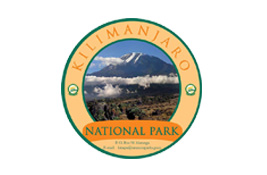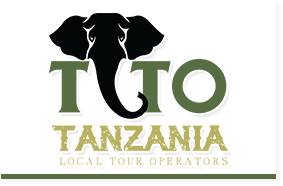What is the best time to see the great migration?
The Great Wildebeest Migration (or Serengeti Wildebeest Migration) is the movement of more than 1 million animals migrating from Serengeti National Park to Maasai Mara National Reserve in {Kenya}. In this natural and truly a wonder of the natural world, wildebeests are accompanied by thousands of zebras and other ungulates that follow the general rainfall gradient.
Wildebeest are the Serengeti and Maasai Mara national reserve driving force, together with some 300,000 zebra and attendant predators, scavengers are a vast ecological powerhouse, roaming the beautiful landscape, setting the boundaries, changing the scenery, altering the vegetation, and lying down the limits and the lifestyle of just everything else that lives here. But don’t let the scale of the natural machine overwhelm you. There is a variety of mammals and birds here that only Africa can boast.
It’s the greatest show on earth, and one of the reasons why so many travelers go on a wildebeest migration safari year after year. Witnessing wildebeest calving, Grumeti River crossing, or simply Mara River crossing is like watching a live National Geographic documentary. Herds of grunting gnus plunge from the banks into the water and thunder across the river while dodging 18-20 foot crocodiles. It is one of Mother Nature’s greatest spectacles.
Since nature sets the schedule, planning a successful Wildebeest Migration safari takes experience and extensive local knowledge. That’s where we come in. We are based in Tanzania, and we have tailor-made trips to the Serengeti and Maasai Mara for hundreds of travelers to witness the Great Migration.
What are the parks covered by the wildebeest migration?
Ngorongoro Conservation Area | Serengeti short grass plains
In the early stages of Migration when the herds are preparing for the exciting Calving season, they usually spread on the plains of the Ndutu area which is western reaches of the Ngorongoro conservation area, and the southern short grass plains of Serengeti National Park.
Once the calving season is over and the calves have already fed on the reach nutrients grass of the Ndutu area, and most pools of water are drying out, a move to Central Serengeti is imminent.
Serengeti National Park.
The wildebeest migration is in the Serengeti national park mostly year-round, which means migration can be watched in Serengeti throughout the year, from the exciting calving period, the rutting, and the incredible River crossing. What guests need to know is the migration has three parts moving like a snake, the head, body, and tail. So, when you are watching the head and body in Maasai Mara the tail is in Serengeti, and by the time the tail is in Maasai Mara in Kenya, then the head is back to Serengeti.
Our commitment is to try and give travelers information that is reliable and helpful when planning their migration safaris.
Maasai Mara National Game Reserve.
After crossing the Mara River around August to late October (sometimes the crossing goes all the way to early November) they’ll stay in Maasai Mara before coming back to Serengeti as they need the Southern end short grass nutrients for their calves which are rich in calcium and phosphorus for their calves born formation.
Countries covered by The Great Migration
The Great Wildebeest Migration occurs between two East African Countries, Tanzania, and Kenya. The migration moves from Serengeti National Park in Tanzania, and Maasai Mara in Kenya. These two parks border the two countries on the northern reaches of Serengeti National Park.
Best time to see the Wildebeest Migration in Serengeti.
Generally, you can see the Great migration almost throughout the whole year in Serengeti this spectacular wildlife event on earth can be seen in Serengeti from the exciting calving season, the rutting time, and the Grumeti River and Mara River crossing when the 18-20 foot crocodiles of the rivers go on the feeding frenzy.
December – March
After coming back from Maasai Mara, it is within this period when calving starts. During these moments, wildebeests and zebra are found in the Southern Serengeti, and the western reaches of the Ngorongoro Conservation Area, the place they consider the best for calving season.
In the Southern Serengeti, there are shorter grasses which makes it an ideal place to give birth as the openness of the plains makes it easier for the herds to see the predators.
If you are interested to see Serengeti Wildebeest Migration during the Calving Season, this could be the best time to visit. However, the approximate calving time when more than 90% of the pregnant cows will give birth in the short- grass plains within six weeks is between the mid/end of January to February, while zebra calving season is mostly spread out throughout the year.
April – May
This is the period when some of the wildebeests and other migrating animals start to move from Southern Serengeti towards other parts of Serengeti.
Since Ndutu has resident cats, in April cat viewing becomes another excellent experience in the Southern Serengeti. Along with the previous months of March and February, this zone of Serengeti National Park offers an amazing live predatory action.
From May, most of the herds will go on and continue their mission to reach western Serengeti, however, this is the best time to experience the migration at the central Serengeti.
Wildlife viewing is fantastic during these two months around the Seronera area in Central Serengeti.
With our commitment to give guests accurate and reliable information, in our opinion, these might be the best time for photographing the big cat’s action, and it’s not the most crowded time of the year if weather permits.
May and June
As you can tell, the gestation period for the wildebeests is roughly 9 months. For them to give birth in February, this is their time for mating and you can find this happening at a very large number.
As the rainfalls start to cool, these two months are the best to experience the herds spreading across all the Central Serengeti and Serengeti Western corridor.
Cat life is also at its best here as the Seronera River usually attracts enough prey which is always a good thing to the cats.
Again, during June and July, as some of the herds tend to head to the Western Serengeti, you may be rewarded by the small crossings of the Grumeti River as the herds leave the park to enter the Singita Game reserve.
In July, there is no better place to be than the Kogatende area. While it’s fair to say that during this period herds can be seen anywhere around Central, West, and Eastern Serengeti.
July, August, September to October
With fewer rains, these months are when the herds cross the Mara River almost daily and in a very huge spectacular group.
Kogatende area is again the best place to be during these months as it gives you the best opportunity to see the herds crossing in crocodiles infested Mara River while the big cats monitoring the situation closely on the sidelines, waiting for proper prey.
While there have been a lot of theories about river crossings, but the truth is this is not something that can be explained logically. Wildebeests and other migrating animals know naturally what to do and at what time.
If they sense that the rainfall is about to start on the next side of the river, they are likely to cross. A few days later or even just a matter of hours after crossing the river, these herds may decide to cross back depending on how they read the weather.
November
This is the time when the herds start to head to the eastern, southern, but mostly they are attracted by the rains of the western Serengeti before moving south in early December.
During November, you may still be lucky to see some crossings, depending on the year.
In 2019 for example, the magnificent crossings were somehow experienced up until the mid of November.
Tours & Safaris
What's Your Dream Safari?
We design private, group joining and camping safaris for people who want to explore African pristine wilderness for unmatched wildlife, trekking and cultural tours. Our amazing team of travel designers, local guides work together to showcase Africa beauty in depth.
Table of Contents
NOTE:
There is no rule of thumb for the wildebeest migration, what we know they follow the general rainfall gradient across the Serengeti-Mara ecosystem with lower rains in the southern and higher rains on the western and northern reaches. There might be other reasons that the wildebeests know themselves, however, this natural event is worth- tracking, and in our opinion, we would advise if you need to explore it at its fullness, find a way to visit when you don’t have a tight or very pressing timetable, and private safari is more preferable since you don’t need to compromise with a group.
Join Our Newsletter
Get expert planning advice and new trip ideas from Africa’s leading safari travel specialists










